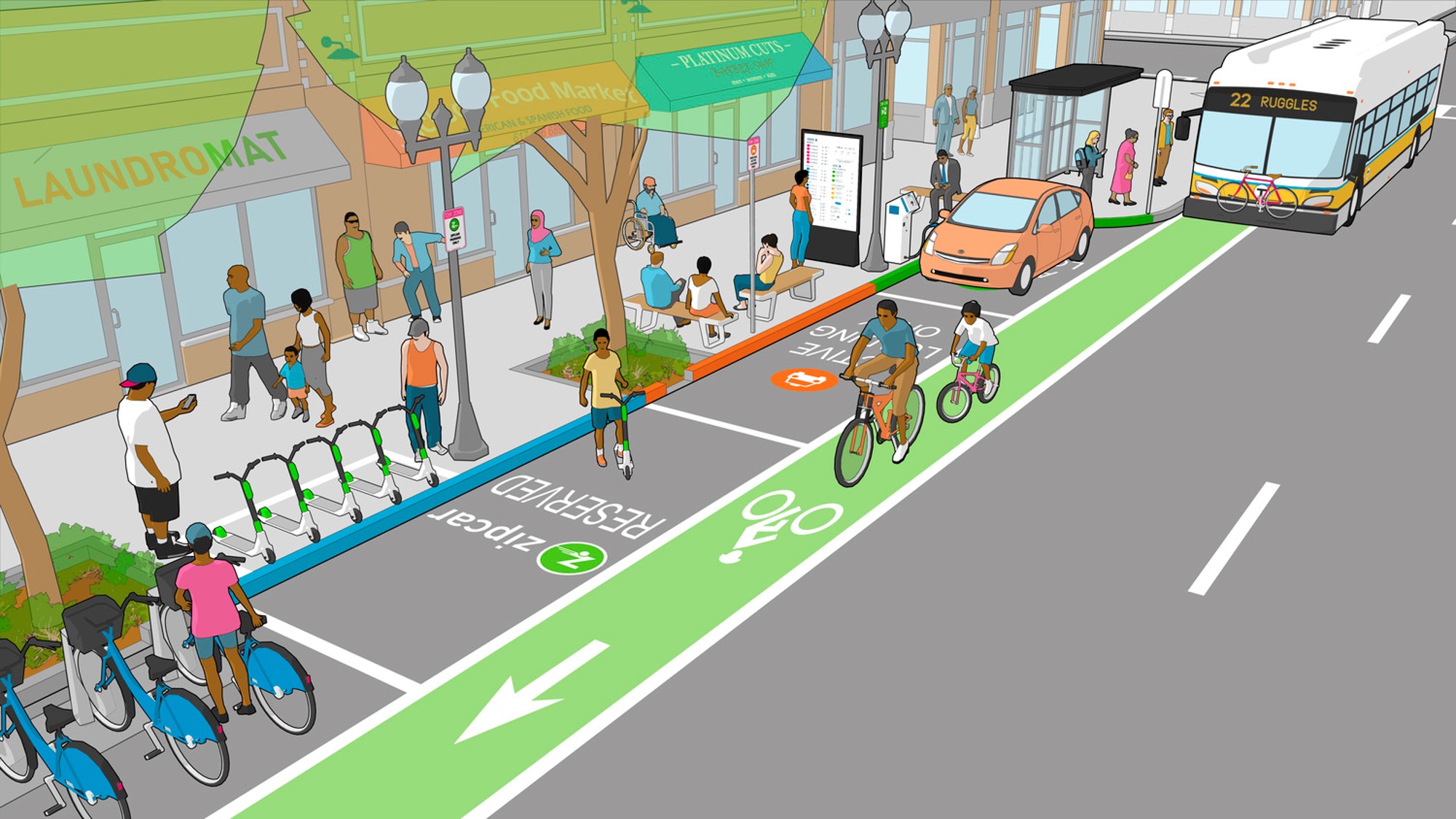This is one of three web pages related to AOT at TRB 2023. There's a Main page, this page, and also a TRB Experience page.
Here are examples of items that AOT staff who attended the Transportation Research Board (TRB) Annual Meeting in January 2023 want to share:
Construction & Materials
Concrete Barrier Systems: New pre-fabricated concrete barrier systems have been developed which has an improved design compared to the Cast-in-place equivalent and exhibits and more preferable mode of failure. The new pre-fabricated concrete barrier system would be a good tool for VT's accelerated bridge construction (ABC) projects.
Asphalt Zipper: A faster, more efficient method compared to traditional road rehabilitation. This technology can be used for repairing small patches and full roads, up to 2 miles a day. We learned that NV DOT uses this "mini reclaimer" for maintenance and to reconstruct low volume roads. Many other states expressed interest.
Asphalt Testing Methods: New testing methods for raveling and shear resistance of cold recycled asphalt mixes were developed under NCHRP Project 09-62 that can be utilized as either Quality Control (QC) or an acceptance tool. Cold asphalt recycling is increasingly being done in VT for Full Depth Reclamation (FDR), Cold Central Plant Recycling (CCPR), and Cold In-Place Recycling (CIR) treatments.
Balanced Mix Design: Repeatability of chosen tests, technician trainings, and cooperation with asphalt producers are all critical for successful state DOT implementation. Long term aging of asphalt mixes is necessary to determine cracking resistance. Sustainability and resiliency will need to be ingrained in Agency practices during paving project programming, design and construction. Agency purchase specification for paving will need reform to accommodate all parties involved.
Asphalt Binder: The use of alternative binder (biomass, coal, wastes, etc.) expected to increase between now and 2050 due to net-zero emission policies. Performance testing and Balanced Mix Design will play a substantial role in evaluating these alternative binders.
Workforce
Staffing: Staffing efficiencies are needed nor more than ever. VTrans still struggles with hiring and being fully staffed. Everyone needs to become more data literate. Need to consider how we could develop some basic literacy training for all relevant employees. VT can consider working with Emergency Management and Performance to implement on Missions Essential Functions (MEF's) as a starting point.
Mental Health: Nationally, the construction industry has the second highest rate of suicide (45.3 per 100,000 workers) and the highest rate of prescription opioids. VT has high rates of suicide in the construction industry (97.7 per 100,000 workers). VT needs to join the fight in this endemic.
Knowledge Management: Need to integrate information and knowledge management into jobs. UDOT surveyed their staff and found that 36% of their employees day was spent looking for information and over 40% of the time they were not able to find what they needed. VDOT has created job books for many positions that would allow someone else to do the main components of the job.
Most DOTs have a one+ day a week in office requirement. More productive working from home, but significant decrease in knowledge transfer to newer employees.
Need to implement better knowledge management practices and maximize the benefit of collaboration days.
Resiliency
Flooding: Just because flood waters recede doesn't mean roads are ready to be reopened. HMA pavements can have long lasting degradation even after flood waters have receded. Can use FWD or GPR to determine when a road has had adequate time to recover. Need to collect baseline data from dry conditions to compare to data collected during saturated conditions. As part of an overall risk assessment picture, we can make VT's infrastructure more resilient.
CDOT has developed metrics to measure system resilience. VT can establish similar metrics to look at sections or road to help prioritize projects.
Quantifying Resiliency: Need to define and identify vulnerabilities and criticality. VDOT has released a plan that lays out a framework of 6 objectives.
Climate Planning Tool: Caltrans has a public facing climate change planning tool that allows them to see project rainfall, high and low temperatures and fire hazards. With the increase of flooding events in VT, this looks like a resource that would benefit VT if we had our own version.
Public Transport and Micro-mobility

Micro-mobility: Integration of micro-mobility is one piece of the system and needs to be integrated with other systems. For safety, we need to focus on Shared curb space and gather better crash data on injuries and deaths. Micro-mobility like bikes and scooters are a first mile/last mile solution that Vermont uses. The planning for and launching of these services should be done using a who system approaching including how we currently use our curb and street space.
Rural On-Demand System: Changing typical public transportation bus system from the fixed route one direction with diesel buses to a fully on-demand system with smaller vehicles and dispatching software. This will create fewer emissions and time waste. VTrans is about to launch 5 new micro-transit services and needs to plan out how a rider would transfer between this and other modes.
Ridership: Transit ridership is down everywhere but some ridership is returning faster than others. Commuter rail was heavily impacted by work from home riders.
Safety
Keynote address from National Transportation Safety Board (NTSB) Chair Jennifer Homendy. Ms. Homendy spoke about the importance that all transportation staff should be striving for Zero Deaths for All Modes of transportation.
